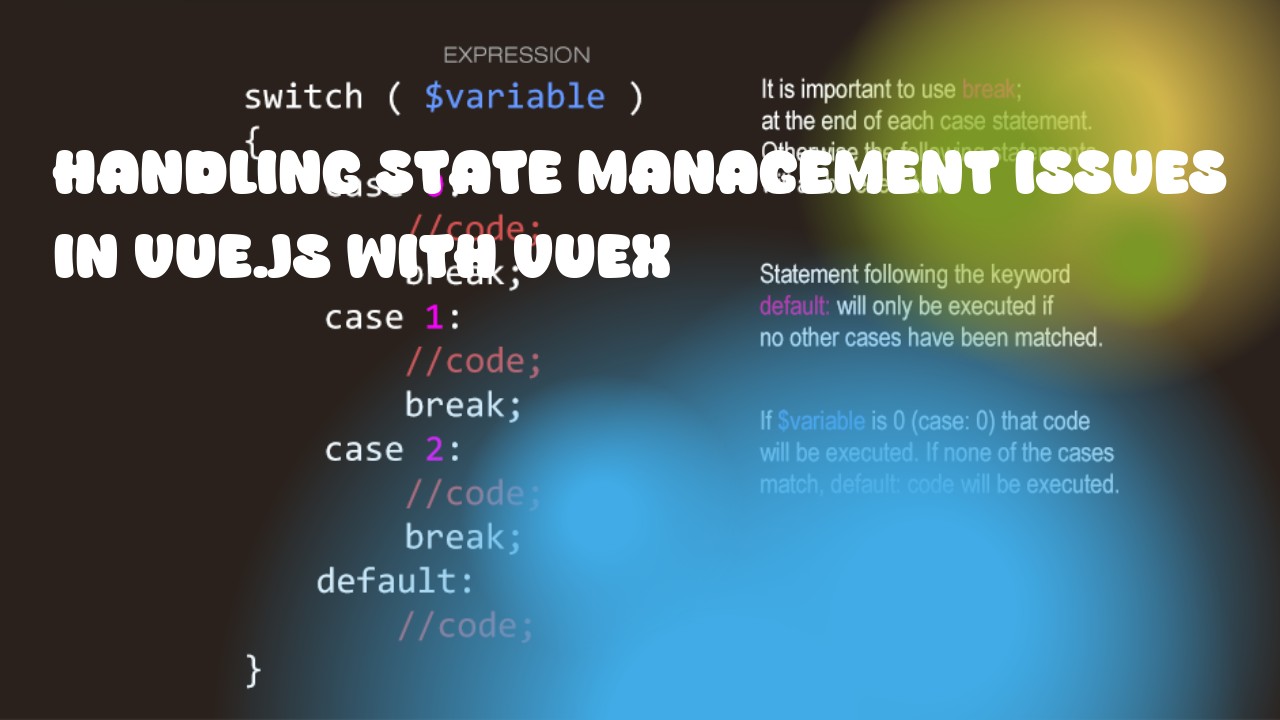Vue.js is an excellent framework for building dynamic web applications, but one common issue that developers face while developing single-page applications (SPAs) is managing the application's state.
In Vue.js, state management can be achieved using different approaches. One popular approach is to use a library like Vuex, which provides a centralized store for all components in an app, ensuring consistent data across the app and making it easier to debug and maintain.
However, when it comes to managing complex state with Vuex, some developers might encounter issues such as:
- Complexity: Managing complex state can be challenging because the state is stored in a centralized store, which can easily become difficult to manage and understand for larger applications.
- Actions: Actions are functions that commit mutations to the store, but it's not always clear what actions should be performed based on certain conditions. This could lead to complex logic and bugs in the app.
- Computed Properties: computed properties can be used to derive state from other state properties, but they can become difficult to manage as the number of dependencies increases.
To handle these issues with Vuex, some developers might use a combination of techniques such as:
- Splitting Large State Objects: breaking down the state object into smaller parts makes it easier to manage and understand, especially in larger applications.
- Using Getters: getters provide computed properties for the state, allowing developers to derive state based on certain conditions without mutating the original state.
- Organizing Actions with Modules: Vuex allows developers to organize actions into modules, which makes it easier to manage complex state and make sure that different parts of the app have access to the correct data.
Here is an example code snippet that shows how to use Vuex in a Vue.js application:
import Vue from 'vue'
import Vuex from 'vuex'
Vue.use(Vuex)
export default new Vuex.Store({
state: {
count: 0,
user: null,
},
mutations: {
increment (state) {
state.count++
},
setUser (state, user) {
state.user = user
},
},
actions: {
async login ({ commit }, credentials) {
const user = await axios.post('/login', credentials)
commit('setUser', user)
},
},
getters: {
isLoggedIn: state => !!state.user,
}
})
This code snippet creates a Vuex store with the following properties:
- State: an object that holds the application's state.
- Mutations: Functions that modify the state in response to actions.
- Actions: Functions that commit mutations to the store based on asynchronous operations.
- Getters: Computed properties for derived state from other state properties.
Developers can use these techniques to handle state management issues with Vuex, making it easier to build complex and maintainable single-page applications.

